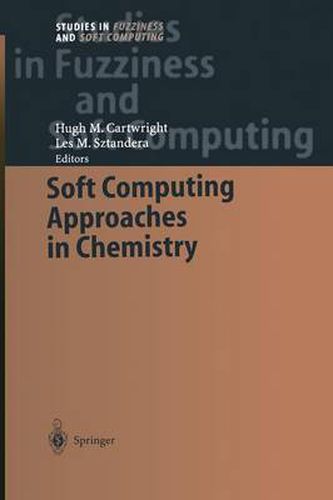Readings Newsletter
Become a Readings Member to make your shopping experience even easier.
Sign in or sign up for free!
You’re not far away from qualifying for FREE standard shipping within Australia
You’ve qualified for FREE standard shipping within Australia
The cart is loading…






This title is printed to order. This book may have been self-published. If so, we cannot guarantee the quality of the content. In the main most books will have gone through the editing process however some may not. We therefore suggest that you be aware of this before ordering this book. If in doubt check either the author or publisher’s details as we are unable to accept any returns unless they are faulty. Please contact us if you have any questions.
The contributions to this book cover a wide range of applications of Soft Computing to the chemical domain. The early roots of Soft Computing can be traced back to Lotfi Zadeh’s work on soft data analysis [1] published in 1981. ‘Soft Computing’ itself became fully established about 10 years later, when the Berkeley Initiative in Soft Computing (SISC), an industrial liaison program, was put in place at the University of California - Berkeley. Soft Computing applications are characterized by their ability to: * approximate many different kinds of real-world systems; * tolerate imprecision, partial truth, and uncertainty; and * learn from their environment. Such characteristics commonly lead to a better ability to match reality than other approaches can provide, generating solutions of low cost, high robustness, and tractability. Zadeh has argued that soft computing provides a solid foundation for the conception, design, and application of intelligent systems employing its methodologies symbiotically rather than in isolation. There exists an implicit commitment to take advantage of the fusion of the various methodologies, since such a fusion can lead to combinations that may provide performance well beyond that offered by any single technique.
$9.00 standard shipping within Australia
FREE standard shipping within Australia for orders over $100.00
Express & International shipping calculated at checkout
This title is printed to order. This book may have been self-published. If so, we cannot guarantee the quality of the content. In the main most books will have gone through the editing process however some may not. We therefore suggest that you be aware of this before ordering this book. If in doubt check either the author or publisher’s details as we are unable to accept any returns unless they are faulty. Please contact us if you have any questions.
The contributions to this book cover a wide range of applications of Soft Computing to the chemical domain. The early roots of Soft Computing can be traced back to Lotfi Zadeh’s work on soft data analysis [1] published in 1981. ‘Soft Computing’ itself became fully established about 10 years later, when the Berkeley Initiative in Soft Computing (SISC), an industrial liaison program, was put in place at the University of California - Berkeley. Soft Computing applications are characterized by their ability to: * approximate many different kinds of real-world systems; * tolerate imprecision, partial truth, and uncertainty; and * learn from their environment. Such characteristics commonly lead to a better ability to match reality than other approaches can provide, generating solutions of low cost, high robustness, and tractability. Zadeh has argued that soft computing provides a solid foundation for the conception, design, and application of intelligent systems employing its methodologies symbiotically rather than in isolation. There exists an implicit commitment to take advantage of the fusion of the various methodologies, since such a fusion can lead to combinations that may provide performance well beyond that offered by any single technique.